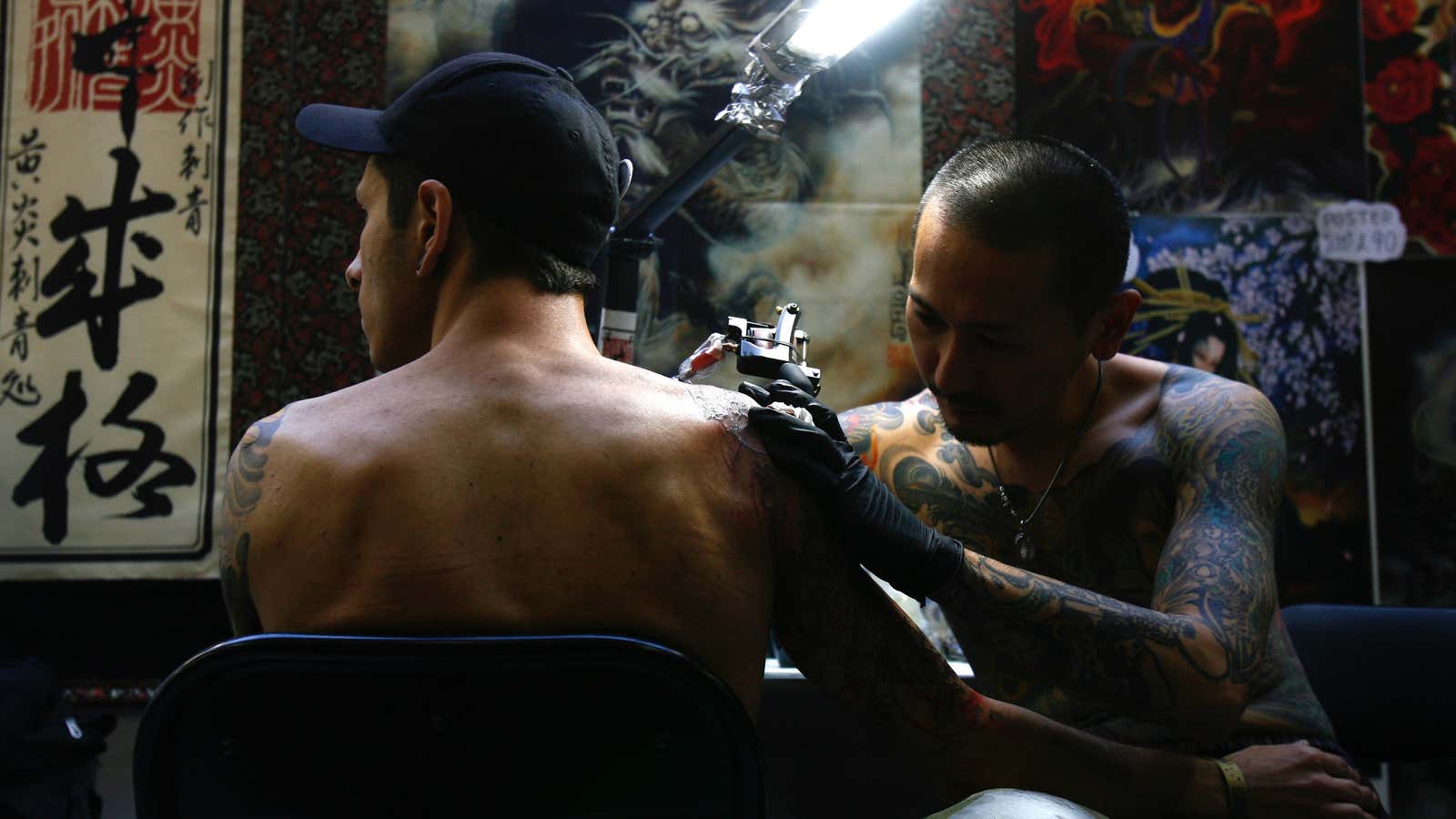Robots have already made their way into commercial warehouses and can handle cleaning our dishes, but would you let an industrial robot arm tattoo you?
Pierre Emm and Johan da Silveira created Tatoué, an industrial robot arm that can autonomously perform intricate tattoos on humans. Using a 3D scanner, the body part is captured. The scan is then uploaded to Dynamo, a design software that converts the art into a language the computer understands: geometry. The software helps apply the design onto the scanned surface, as well as export the pattern in code to the robot. Tatoué currently uses the same needle and ink as traditional tattoo guns.
Before developing the machine, the duo experimented by attaching a tattoo gun to a 3D printer in 2014. The artists created the latest robot arm during their four-month artist-in-residence program at San Francisco-based software company Autodesk. The program allows artists to own everything they create, but requires them to share their technology on an open source platform.
The tattoo industry probably wasn’t one considered ripe for disruption, and aficionados will no doubt find the entire idea sacrilegious—tattoos are an extremely intimate art. That said, there is plenty of money at play: As of 2015, tattooing was a $722 million market in the US, according to market research firm IBIS World.
“It was very interesting to us to investigate the traditional art of tattooing, which is practiced differently in various countries,” the artists, who met at l’ENSCI design school in Paris, told Quartz in an email. “Equally, the fact that there is a lack of technological evolution in the tattoo industry over the past one hundred years interested us.”
But don’t expect to see it in your local tattoo parlor anytime soon. A company representative told Quartz, “robotic arms are not cheap and neither is the cost of operation and maintenance.”
Indeed, the prototyping took several rounds. ”Early on our priority was to get started tattooing the human body as quickly as possible. Along the way we built various iterations of the machine as we experimented. We would record each technological iteration with a tattoo and as a result our bodies are a kind of timeline for the creative process of the project,” the artists said.
At first glance, you can’t help but appreciate the finesse of the machine. Then, all the terrible scenarios come to mind: What if the pressure is too much and it hurts the bone? What if the person isn’t strapped in tightly enough and moves? Will the tattoo arm just keep going no matter what happens?
“Inherently, [industrial] machines are really designed to be working separate to people, behind big barricades,” David Thomasson, who led the Autodesk team, said in the video. ”The standards don’t exist for this [robot] so our health and safety team went through that in minute detail and got advice form external groups.” The safety team took ideas from the Robotic Industries Association standard and was guided by Pilz Automation Safety for their risk assessment.
The design is pre-programmed but a human is controlling the robot’s speed and progression. The tattoo recipient also has an emergency stop option. “As anyone that has received a tattoo may know, the robot does cause pain when it tattoos—but no more than a normal tattoo,” Julia Cabral, head of safety at Autodesk, told Quartz.




